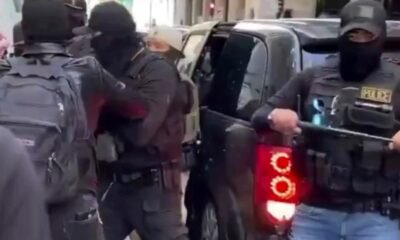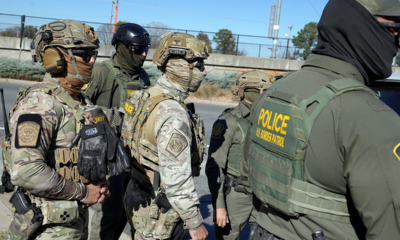INTERNACIONAL
Federal agent says Chicago’s ‘ICE-free zones’ endanger operations, embolden protesters
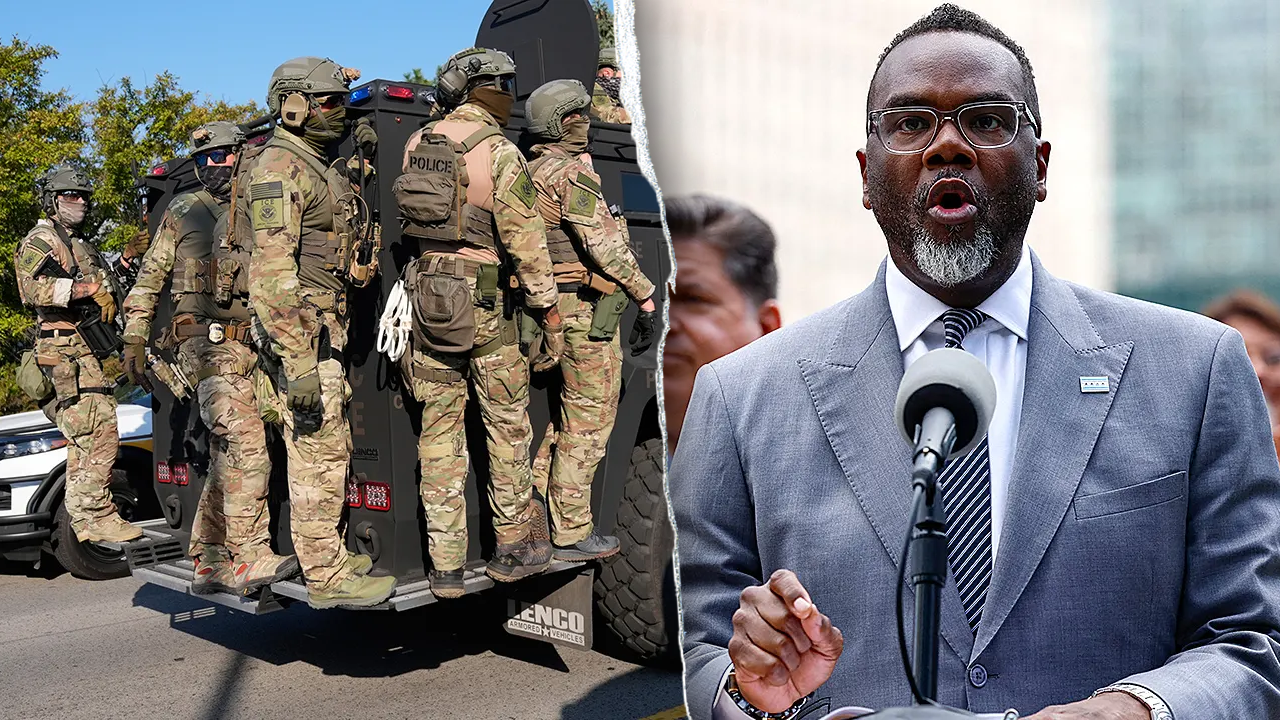
NEWYou can now listen to Fox News articles!
As Chicago Mayor Brandon Johnson signs an executive order establishing «ICE-free zones,» a federal special agent working on deportations said these types of measures are causing real complications and hampering ICE’s ability to crack down on criminal illegal immigrants.
The special agent, who works deportations in New England, told Fox News Digital that sanctuary policies banning ICE agents from using police departments or other city areas for staging often forces agents to be exposed, having to prepare for missions in public areas.
The agent explained that if ICE does not have a nearby office and is barred from using city grounds, «that means you’re stuck with, ‘Okay, I’m going to go to a supermarket. I’m going to go to some office park if I can find one, maybe a park while I don my vest and all that, and I’m getting briefed.»
On Monday, Johnson, a Democrat, signed an executive order prohibiting the use of city parking lots and garages for civil immigration enforcement staging areas, processing locations or operations bases.
PRITZKER SUES TRUMP TO BLOCK NATIONAL GUARD ACTION IN ILLINOIS
Chicago Democratic Mayor Brandon Johnson (right) signed an executive order on Monday barring federal officials from using city property for immigration enforcement operations. (Erin Hooley/AP and Kamil Krazaczynski/Getty Images)
Johnson touted the order as establishing «ICE-free zones.» Speaking at a press conference for the signing on Monday, he said the order also enables «unwilling private businesses» to refuse ICE agents’ use of their property to stage for operations. He said the order is «aimed at reining in this out-of-control administration.»
«If the federal government violates this executive order, we will take them to court,» Johnson said, urging Trump to leave Chicago «the freak alone.»
In a statement posted on X, Johnson accused ICE agents of «detaining elected officials, tear-gassing protestors, children, and Chicago police officers, and abusing Chicago residents.»
«With this Executive Order, Chicago stands firm in protecting the Constitutional rights of our residents and immigrant communities and upholding our democracy,» Johnson wrote.
CHICAGO MAYOR VOWS CITY POLICE ‘WILL NOT EVER COOPERATE WITH ICE’
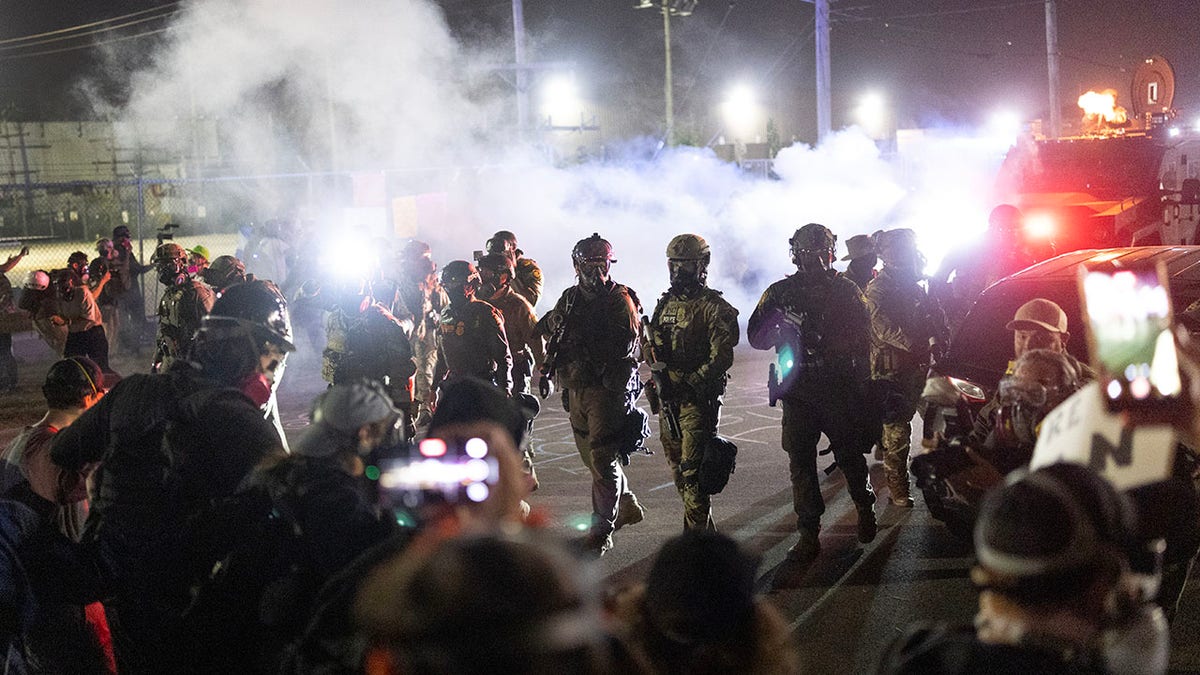
Federal law enforcement agents break up protesters outside of an immigrant processing center with a barrage of tear gas and pepper balls on Sept. 27, 2025, in Broadview, Illinois. The demonstrators were protesting a recent surge in ICE apprehensions in the Chicago area, part of a push by the Trump administration dubbed Operation Midway Blitz. (Getty Images)
The White House responded by issuing a blistering statement in which it called the order «a disgusting betrayal of every law-abiding citizen.»
The White House called the order a «sick policy» that «coddles criminal illegal alien killers, rapists, and gangbangers who prey on innocent Americans.»
«Shielding the most depraved, violent criminal illegal aliens from justice is not only an insult to every Chicagoan, it’s also a dangerous intensification of Democrats’ lunatic ‘sanctuary’ agenda where criminal illegals come before American citizens,» said the White House statement.
According to the agent, Chicago is not the only sanctuary city that bars ICE from using municipal property to stage immigration enforcement operations.
«What does that leave you with in an urban environment? You’re going to go to a supermarket. Who’s at a supermarket? Everyone and their grandmother,» the agent said.
FIRST ON FOX: DHS CHIEF SLAMS ‘VIOLENT ANARCHISTS,’ PLEDGES FULL SUPPORT FOR FEDERAL AGENTS
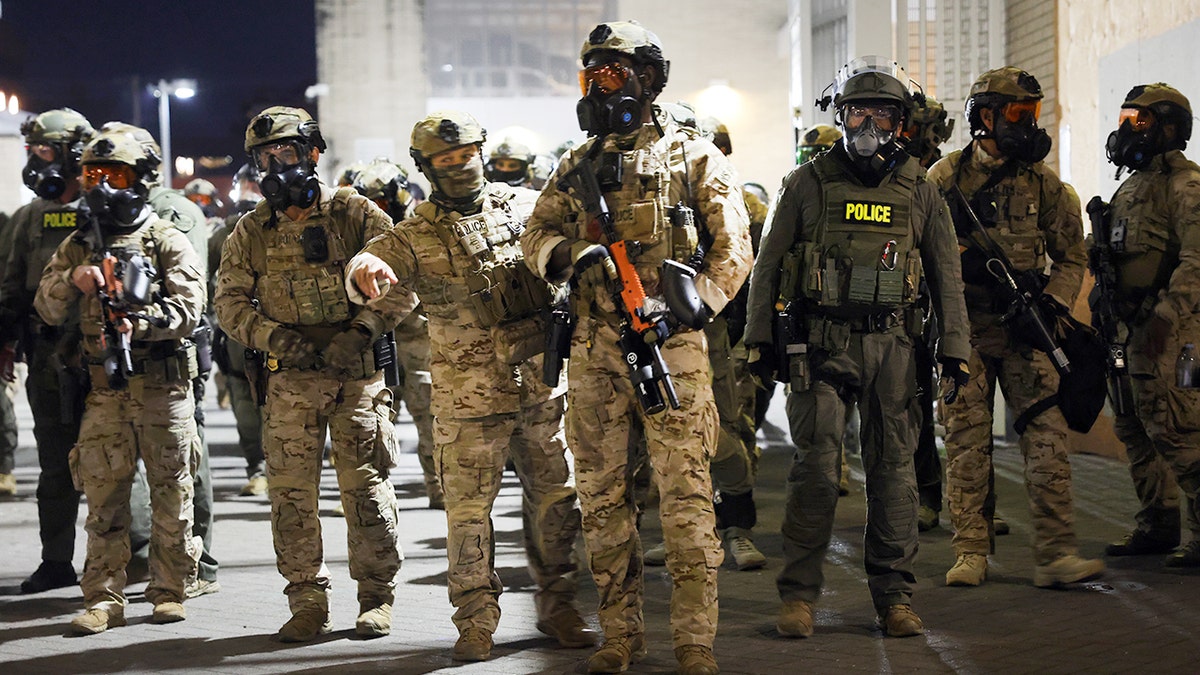
Federal agents, including members of the Department of Homeland Security, Border Patrol and the police, attempt to keep protesters back outside an Immigration and Customs Enforcement facility Oct. 5, 2025, in Portland, Oregon. (Spencer Platt/Getty Images)
The agent explained that preparing for missions in public spaces presents an operational risk because it allows anti-ICE activists to track and publicize their movements.
CLICK HERE TO DOWNLOAD THE FOX NEWS APP
«They can see us getting together and they put it on Facebook immediately because there’s different Facebook pages that we know they put us on,» said the agent.
The agent also expressed concern over sanctuary policies keeping police departments from being able to assist if protesters get violent.
«Being in a sanctuary city, in the event this gets violent, or they get handsy or somebody gets hurt, either a government person or a protester. What are the local police going to do? Are they going to let us deal with it? I don’t know,» said the agent.
Fox News Digital’s Deirdre Heavey contributed to this report.
immigration,illegal immigrants,sanctuary cities,chicago,migrant crime,homeland security
INTERNACIONAL
Tokio rechazó las acusaciones “infundadas” de Beijing tras una carta remitida a la ONU e instó a China al diálogo

El Ejecutivo japonés salió este sábado al cruce de las recientes denuncias de China contra la primera ministra Sanae Takaichi, a quien el régimen chino acusó de alterar la postura histórica de Tokio sobre su respaldo a Taiwán.
Desde Tokio calificaron las imputaciones como “totalmente infundadas” y subrayaron la continuidad de su línea política, negando un cambio en la posición oficial sobre el estrecho. Así lo expresó la portavoz Maki Kobayashi durante la cumbre del G20 en Johannesburgo, en declaraciones reproducidas por Bloomberg.
Kobayashi aseguró estar al tanto de la carta enviada por Beijiing a António Guterres, secretario general de la Organización de las Naciones Unidas (ONU), y recalcó que Japón explicó ya “en repetidas ocasiones” el sentido de los comentarios de su primera ministra, remarcando la apuesta del gobierno nipón por “el diálogo”.
Pese a ello, en Johannesburgo no fue posible avanzar en una conversación directa: desde China descartaron una reunión oficial entre Takaichi y el primer ministro Li Qiang, aunque ambos compartieron espacio en la foto de grupo de la cumbre.
El origen de la controversia radica en las declaraciones de Takaichi sobre la potencial respuesta japonesa ante una posible escalada militar de China contra Taiwán. El régimen liderado por Xi Jinping reaccionó enviando una misiva donde advierte de posibles “medidas de autodefensa” si Japón llegara a intervenir militarmente en apoyo a la isla, al tiempo que buscó movilizar respaldo internacional en Naciones Unidas.
Lejos de dar marcha atrás, Takaichi reiteró este viernes su negativa a retractarse de sus afirmaciones referidas a Taiwán y defendió la determinación japonesa de actuar igual ante una emergencia de seguridad en la región. Al calor del conflicto, incluso el cónsul chino en Osaka, Xue Jian, llegó a compartir (y luego eliminar) un mensaje en el que apostaba por “cortar el sucio cuello” de la primera ministra nipona.
Al mismo tiempo, las relaciones bilaterales registran nuevas restricciones: entre las últimas medidas, Beijing desaconsejó a sus ciudadanos visitar Japón, ordenó la suspensión de importaciones de mariscos japoneses y detuvo el estreno de nuevas películas japonesas en su mercado.
En cuanto a la relación entre Tokio y Taipéi, Taiwán confirmó el viernes pasado el levantamiento de las restricciones que, desde 2011, afectaban a las importaciones de alimentos originarios de Fukushima (Japón). Las autoridades informaron que dejarán de aplicar los requisitos de doble certificación y la inspección exhaustiva por lotes.
La medida surge poco después de que el gobernador de Niigata, Hideyo Hanazumi, autorizara la reactivación de la central nuclear de Kashiwazaki-Kariwa —la mayor del mundo—, que permanecía fuera de servicio desde el accidente nuclear ocurrido en Fukushima Daiichi en 2011 a raíz de un terremoto y posterior tsunami.
El anuncio del gobierno taiwanés marca la normalización de criterios para la entrada de productos japoneses en la isla, en un contexto donde la energía nuclear y la seguridad alimentaria siguen siendo ejes de debate en Japón.
La disputa regional se enmarca en décadas de sensibilidad diplomática. Desde que los lazos políticos entre China y Taiwán se cortaron en 1949 tras la guerra civil, solo se restablecieron en formatos no oficiales a partir de los años 80, mientras Tokio y Beijing mantienen diferencias históricas sobre la soberanía y seguridad en la región.
International,Relations,Africa,Diplomacy / Foreign Policy
INTERNACIONAL
EXCLUSIVE: Bondi DOJ transfers death row inmates commuted by Biden to ‘supermax’ prison

NEWYou can now listen to Fox News articles!
FIRST ON FOX — Two federal inmates previously on death row — one a crooked New Orleans cop, the other behind a multi-state killing spree — have been transferred to a notorious «supermax» prison in Colorado, the Justice Department told Fox News Digital.
News of their transfers comes as U.S. Attorney General Pam Bondi looks to crack down on the previous administration’s sweeping clemency actions, especially those against violent crime.
The former death row inmates were transferred Thursday to the U.S. Penitentiary Administrative Maximum Facility in Florence, Colorado, also known as «ADX,» Justice Department officials confirmed.
TONY HAWK, TAIWAN AND A FLASHLIGHT: TRUMP ASSASSINATION ATTEMPT SUSPECT’S BIZARRE DEFENSE
They are among the 37 death row inmates whose sentences former President Joe Biden commuted shortly before leaving office last December. The news prompted criticism and complaints that the record clemency and commutation actions were done as a political «Hail Mary» and without proper vetting.
Eight death row inmates have already been transferred to ADX, the Justice Department told Fox News Digital, bringing to 10 the number of death row inmates that have been transferred to the prison since mid-September.
President Donald Trump walks with Attorney General Pam Bondi during a visit to the Justice Department March 14, 2025, in Washington, D.C. (Andrew Harnik/Getty Images)
More are expected soon. all 37 death row inmates commuted by Biden are expected to be moved to the prison by «early next year,» the Justice Department told Fox News Digital.
The effort comes as Bondi and the Trump administration have sought to reverse some of the Biden administration’s efforts on criminal justice reform, with an emphasis on cracking down on violent crime.
Though sentence commutations cannot be fully reversed, Justice Department officials told Fox News Digital, Bondi has prioritized ways to penalize these individuals in coordination with directives from Trump and to ensure that the «conditions of confinement» are «consistent with the security risks those inmates present because of their egregious crimes, criminal histories and all other relevant considerations,» according to an earlier DOJ memo.
«Two more monsters who plotted and violently murdered innocent people will spend the rest of their lives in our country’s most severe federal prison,» Attorney General Pam Bondi told Fox News Digital in a statement.
«This Department of Justice will continue to seek accountability for the families blindsided by President Biden’s reckless commutations of 37 vicious predators.»
Like the eight former death row inmates sent to Colorado’s supermax prison, the two criminals processed in ADX Thursday have been convicted of particularly heinous crimes.
One individual chased down his ex-girlfriend from Roanoke, Virginia, to Charlotte, North Carolina, where he cut phone lines to the apartment she was living in before using cans of gasoline to set the building on fire.
BIDEN CLEMENCY ANNOUNCEMENT GETS MIXED REVIEWS ON CAPITOL HILL: ‘WHERE’S THE BAR?’
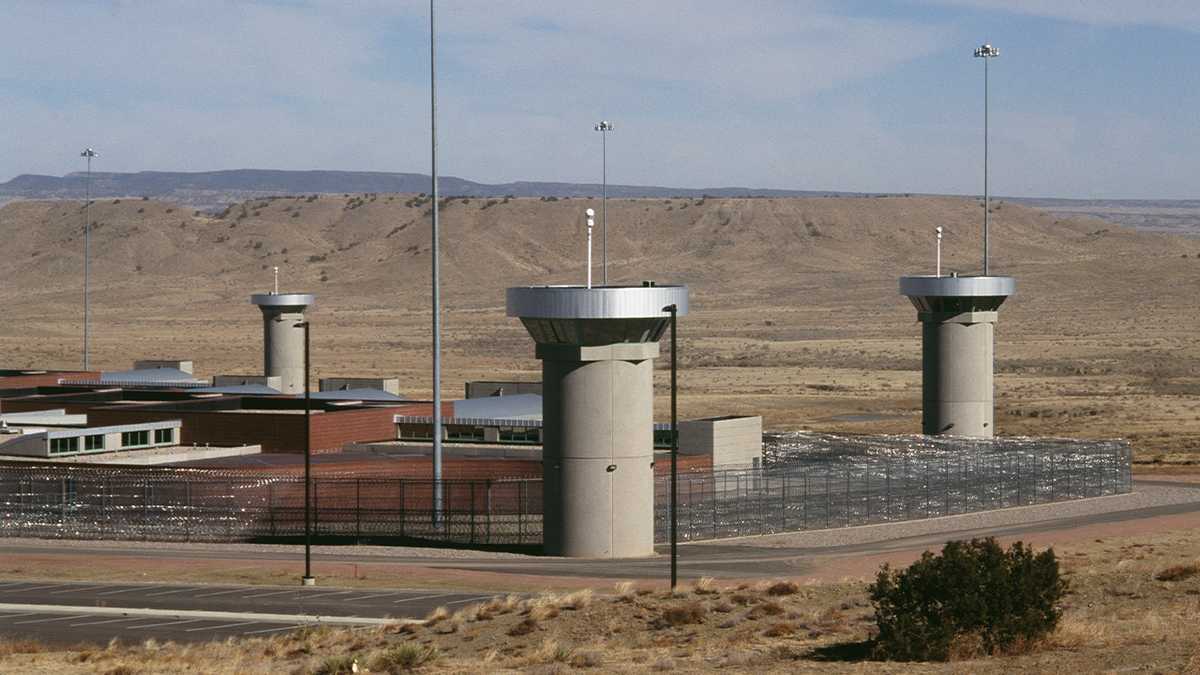
The ADX supermax prison in Florence, Colo. (Robert Daemmrich Photography Inc/Sygma via Getty Images)
Though she escaped via a second-story window and was hospitalized for second- and third-degree burns, he followed her back to her family’s home in Virginia two months later, where he gunned her down on the streets of her neighborhood and just steps from her mother.
Another inmate, a former New Orleans police officer known as «Robocop» for his large physical demeanor and aggressive law enforcement style, was caught on tape by the FBI as he ordered and orchestrated the killing of a mother of three who had come to the precinct hours earlier to submit a supposedly confidential brutality complaint about his behavior that she witnessed on her way home the night before.
The FBI had stumbled upon the conversation as part of a broader probe it had started to investigate a so-called «protection racket» between cocaine dealers in New Orleans and the city’s police force, which had been guarding a warehouse stocked with the drug. The same officer was later revealed as one of the chief conspirators in the protection racket.
BIDEN STIRS OUTRAGE IN SCRANTON BY COMMUTING ‘KIDS FOR CASH’ JUDGE’S SENTENCE
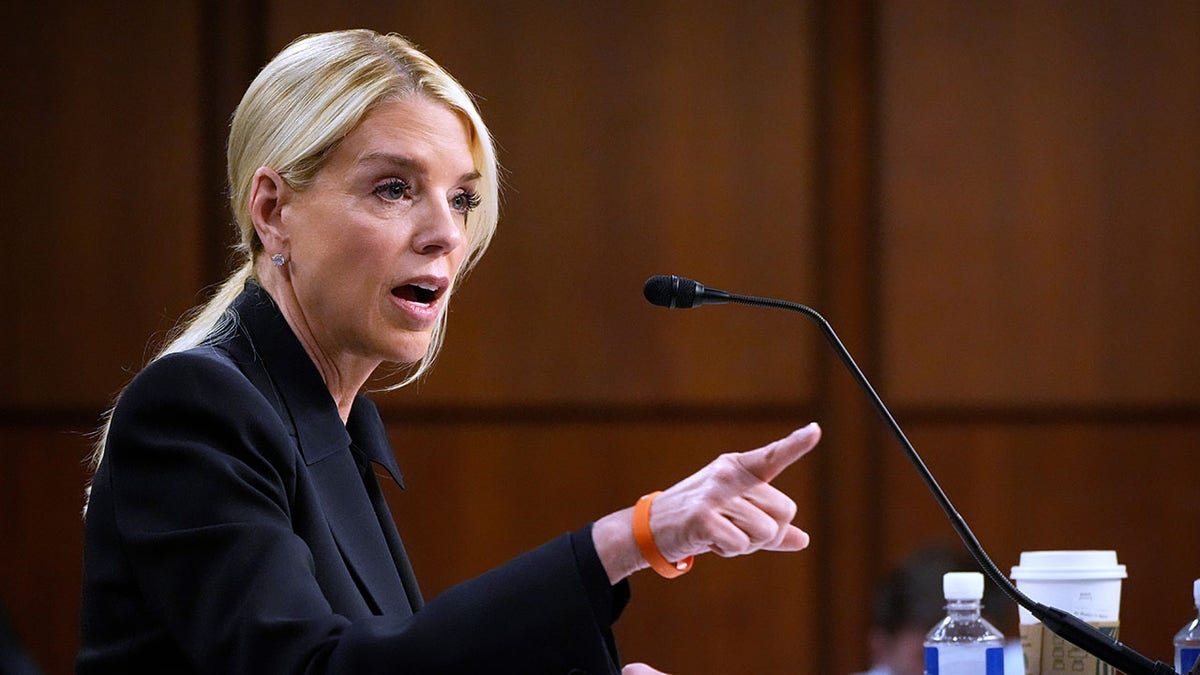
Attorney General Pam Bondi appeared before a Senate Judiciary Committee oversight hearing on Capitol Hill in Washington. (AP Photo/Mark Schiefelbein)
He was also found to have falsely testified in two murder cases, including one murder he has since been linked to. The statements were used to exonerate four men from prison, including three teenagers who had been wrongfully convicted of a murder 28 years earlier.
ADX is the only true federal «supermax» prison in the U.S., and its inmates are as notorious as the prison’s reputation.
Among them are Ramzi Yousef, convicted in the 1993 World Trade Center bombing; Dzhokhar Tsarnaev, one of the Boston Marathon bombers; former Sinola Cartel leader Joaquín Guzmán, or «El Chapo»; and Mamdouh Mahmud Salim, the co-founder of al Qaeda.
Shortly after her confirmation as attorney general, Bondi issued a memo aimed at «restoring a measure of justice» to the victims’ families.
The measures granted by Biden earned more criticism than former President Barack Obama. As Fox News reported at the time, the vast majority of Obama’s clemency actions focused on commuting the sentences of federal inmates who met certain criteria outlined under his administration’s Clemency Initiative.
Bondi hosted victims’ families earlier this year to hear their concerns about the commutations, the DOJ said. Some said they had been stunned by the eleventh-hour commutations and that they had not been given a heads-up by the Biden administration.
CLICK HERE TO GET THE FOX NEWS APP
In February, Bondi issued a memo to the Bureau of Prisons ordering an evaluation of where these prisoners should be detained.
donald trump,justice department,politics,crime world
INTERNACIONAL
Teachers called ‘true heroes’ after repelling grizzly bear that attacked school group, injuring 11

NEWYou can now listen to Fox News articles!
Teachers fended off a grizzly bear that attacked a school group walking along a trail in British Columbia, Canada, on Thursday, officials said.
«The group had stopped along a trail near the community when a grizzly bear emerged from the forest and attacked,» Insp. Kevin Van Damme of British Columbia’s Conservation Officer Service, said in an update on social media. «Teachers successfully repelled the bear using pepper spray and a bear banger.»
Eleven people were injured in the attack, including students in the fourth and fifth grade, according to CBC News.
Two were in critical condition, two in serious condition and the other seven were treated at the scene, the British Columbia Health Services said.
STATE DEPARTMENT WARNS AMERICANS IN JAPAN AS DEADLY BEAR ATTACKS KILL 13 PEOPLE SINCE APRIL: ‘BE DILIGENT’
British Columbia’s Conservation Officer Service said the grizzly emerged from the woods and «attacked.» (Matthew Bailey/VWPics/Universal Images Group via Getty Images)
The incident happened in Bella Coola, a town more than 400 miles north of Vancouver.
The victims were taken to Bella Coola Hospital and were being transferred to Vancouver for further care, Van Damme said.
Officials were still searching for the bear as of Friday, who they believe may have been previously injured.
HIKER’S FRIEND WATCHES IN HORROR AS BROWN BEAR DRAGS MAN INTO BUSHES ON MOUNTAIN: REPORT
«We recognize this incident is distressing for the community. We are in close contact with the Nuxalk Nation as our investigation continues. We thank them for their collaborative efforts to ensure community awareness and shared safety information,» Van Damme said. «Our thoughts are with the victims and their families, and we wish them a full and speedy recovery.»

Bella Coola is more than 400 miles north of Vancouver in British Columbia. (Google Maps)
CLICK HERE TO GET THE FOX NEWS APP
Tamara Davidson, British Columbia’s Minister of Environment and Parks, called the teachers who fought off the bear «true heroes,» adding that they were well-prepared, according to the Guardian.
world,wild nature,canada

 POLITICA1 día ago
POLITICA1 día agoTras la orden de decomiso de los bienes de CFK, la Justicia evalúa avanzar sobre el departamento de San José 1111

 POLITICA2 días ago
POLITICA2 días agoJavier Milei sobre las coimas en la ANDIS: “Hay mucha mala intención política”

 ECONOMIA3 días ago
ECONOMIA3 días agoEl Gobierno invierte USD 300 millones en la compra de 43 trenes nuevos para el AMBA



